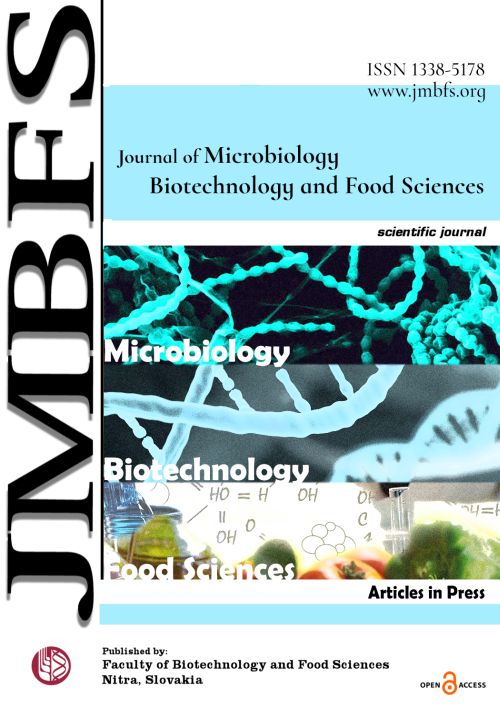DETERMINATION OF PECTIN METHYLESTERASE ACTIVITY OF PRICKLY PEAR (OPUNTIA FICUS INDICA) FRUIT AND ITS KINETIC PARAMETERS
DOI:
https://doi.org/10.55251/jmbfs.10571Keywords:
Opuntia ficus indica, prickly pear, pectin methylesterase, kinetics parameters, thermal inactivationAbstract
The prickly pears (Opuntia ficus indica) belonging to the Cactaceae family are grown in arid and semi-arid regions and harvested in summer to fall season in the Mediterranean basin, the United States, and South America. Besides having pleasure flavor, high betalain pigment, vitamin C, mineral content, and amino acids such as proline and taurine are made prickly pear as very useful functional food or food ingredient. In this study, biochemical properties (optimum temperature, optimum pH, the maximum reaction rate (Vmax), substrate specificity (Km), and thermal stability) of the Pectin methylesterase (PME) obtained by partial purification from prickly pear were investigated. PME activity was measured by titremetric method and apple pectin was used as substrate for calculations. The enzyme has optimum activity at pH 7.0 and an optimum temperature of 40 °C. Km and Vmax values of the enzyme were calculated as 0.162 mg/mL and 3.05 units/mL, respectively. Activation energy (Ea) and value of Z are calculated as 57.86 kj.mol-1 and 41.32 °C, respectively. In thermal inactivation studies at 70, 80, and 90 °C reaction rate constants (k) were found as 0.16, 0.23, and 0.50 min-1, thermal half-life times (t1/2) were calculated as 4.35, 3.08, and 1.42 min, and decimal reduction time (D-value) was calculated as 14.44, 10.25 and 4.74 min, respectively. In addition, by analyzing the biochemical properties of the PME enzyme found in prickly pear fruit, researchers expect to gain insights into the ideal processing temperature and other factors that impact the quality of the fruit when it is processed into different food products.
Downloads
Downloads
Published
How to Cite
Issue
Section
License
Copyright (c) 2023 Salih Aksay, Fırat Çınar, Ayşegül Güleç Kavakliçeşme, Rıdvan Arslan

This work is licensed under a Creative Commons Attribution 4.0 International License.
All papers published in the Journal of Microbiology, Biotechnology and Food Sciences are published under a CC-BY licence (CC-BY 4.0). Published materials can be shared (copy and redistribute the material in any medium or format) and adapted (remix, transform, and build upon the material for any purpose, even commercially) with specifying the author(s).





